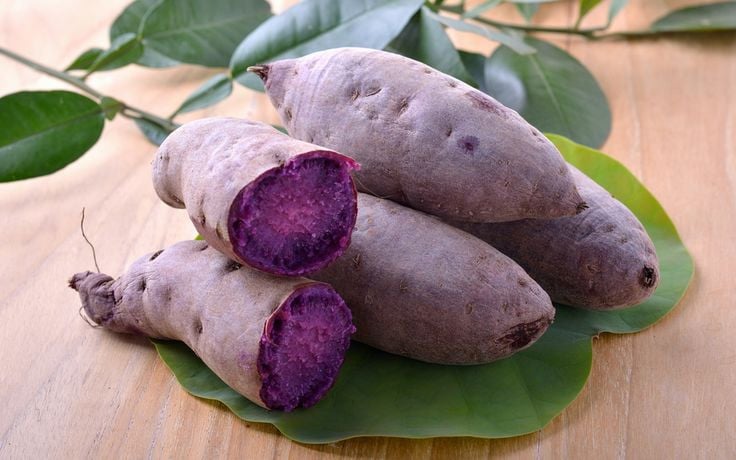Nutritional value
Sweet potatoes are a healthy source of complex carbohydrates, providing you with the energy your cells need to function properly. According to the U.S. Department of Agriculture , a medium-sized cooked sweet potato provides 23.6g of carbohydrates (8% of the daily requirement), 103 calories, and no fat or cholesterol.
Potatoes also provide a significant amount of fiber, which helps the digestive system function well and prevents constipation. Potatoes contain several important nutrients, including vitamins A, B, and C, as well as potassium, manganese, magnesium, and copper.
An average sweet potato contains 30.8g of magnesium. According to the Journal of Nutrition , magnesium plays an essential role in nerve transmission and muscle contraction, potentially preventing and treating neurological disorders and anxiety.

Sweet potatoes come in many different colors, each with a different flavor and texture. (Photo: Washington Post)
The difference between potato colors
Different colored sweet potatoes can have different textures and flavors. For example, orange-fleshed sweet potatoes are sweeter and firmer inside, while white-fleshed ones are drier and paler. Purple sweet potatoes, originally from Okinawa (Japan), quickly became popular in other countries. This type of sweet potato has a creamy texture, a sweet taste, and is believed to contribute to the longevity of the Japanese people.
In general, according to Livestrong , most sweet potatoes have similar levels of vitamins and minerals. Meanwhile, the color of the flesh indicates the origin and content of antioxidants. Sweet potatoes with orange flesh are rich in carotenoids, while those with purple flesh are rich in anthocyanins. These antioxidants give the sweet potatoes their distinct colors.
Carotenoids are yellow and orange pigments that are a source of vitamin A, boost the immune system, are good for the eyes, and help prevent Lou Gehrig's disease (ALS). The most common carotenoids are beta-carotene, lutein, zeaxanthin, and lycopene.
Anthocyanins are naturally occurring flavonoids found in red, purple, and blue fruits. According to research published in the Journal of Food and Nutrition Research , anthocyanins are not only powerful antioxidants, but also have anti-inflammatory and antibacterial effects, and help prevent obesity, diabetes, cardiovascular disease, and cancer.

Purple sweet potatoes are good for the eyes. Photo: Greendna
Studies have compared the antioxidant content of white, cream, and purple sweet potatoes. Accordingly, purple sweet potatoes have the highest levels of antioxidants and total soluble fiber.
Another study comparing sweet potatoes with white, yellow, and purple flesh confirmed the above results. The conclusion, published in the journal Preventive Nutrition and Food Science , showed that all colors of sweet potatoes had similar polyphenol content, but purple-fleshed sweet potatoes had the highest anthocyanin antioxidant content, while white-fleshed sweet potatoes had the lowest.
If you have good eyesight, sweet potatoes are a good choice due to their high vitamin A content. One orange-fleshed sweet potato provides 730% of your daily vitamin A requirement, which can prevent dry eyes, night blindness, and reduce the risk of eye infections. Purple-fleshed sweet potatoes contain an anthocyanin that can help keep your eyes healthy.
 How to prevent vitamin D deficiency in children
How to prevent vitamin D deficiency in childrenOffice supply is trending upwards sharply.
Source


![[Photo] Prime Minister Pham Minh Chinh attends the Conference on the Implementation of Tasks for 2026 of the Industry and Trade Sector](/_next/image?url=https%3A%2F%2Fvphoto.vietnam.vn%2Fthumb%2F1200x675%2Fvietnam%2Fresource%2FIMAGE%2F2025%2F12%2F19%2F1766159500458_ndo_br_shared31-jpg.webp&w=3840&q=75)













































































































Comment (0)